|
Published on Dec 4, 2025
 In June, together with the students of our partner school in Benešov, we collected seed biomass and seeds of herbs from a species-rich donor meadow in Konopiště (watch the video). In June, together with the students of our partner school in Benešov, we collected seed biomass and seeds of herbs from a species-rich donor meadow in Konopiště (watch the video).
In October, we sow the collected biomass and seeds in the school facility in Pomněnice. We will monitor the plot, and we hope that soon we will find many flowering plants there.
#TeamUp2Restore
Published on Dec 1, 2025
 Neither the poor weather forecast nor the mud (lots of mud) could prevent us from visiting the Czech-Slovak Army quarry in the Most region. We enjoyed the quarry in its autumnal foggy atmosphere. We visited areas that were declared a National Natural Monument in October this year and where measures to support biodiversity are already being implemented. However, the main goal of our trip was to visit the spontaneously developed water pools. Our student Ester is monitoring these pools as part of her Bachelor thesis and is preparing a virtual tour focused on the ecological restoration of aquatic ecosystems in the mining landscape of the Most Basin. If everything goes according to plan, this tour will be ready by the end of spring next year. Neither the poor weather forecast nor the mud (lots of mud) could prevent us from visiting the Czech-Slovak Army quarry in the Most region. We enjoyed the quarry in its autumnal foggy atmosphere. We visited areas that were declared a National Natural Monument in October this year and where measures to support biodiversity are already being implemented. However, the main goal of our trip was to visit the spontaneously developed water pools. Our student Ester is monitoring these pools as part of her Bachelor thesis and is preparing a virtual tour focused on the ecological restoration of aquatic ecosystems in the mining landscape of the Most Basin. If everything goes according to plan, this tour will be ready by the end of spring next year.
We would like to thank Michal Porteš, who, as always, was a great guide.
  
Published on Oct 30, 2025
 Our new learning platform DERTO has been launched! It offers teaching materials on ecological restoration freely available for download. Visit it here: derto.teamup2restore.eu Our new learning platform DERTO has been launched! It offers teaching materials on ecological restoration freely available for download. Visit it here: derto.teamup2restore.eu
Find out more in the attached press release.
#TeamUp2Restore

Published on Oct 21, 2025
 Last week, a Focus group on ecological restoration was held in České Budějovice as part of the TEAM#UP project. The goal was clear—to fine-tune the teaching materials that we use to feed the DERTO platform (derto.teamup2restore.eu). All essential information on the topic of ecological restoration will be collected there and made available to a wide range of users. We also discussed the long-term sustainability of the platform and materials, as well as the best way to support the teaching of ecological restoration in VET schools. The meeting was particularly fruitful thanks to the fact that it brought together a very diverse group of people with different perspectives on the issue – from the private, public, academic, and non-governmental sectors. Last week, a Focus group on ecological restoration was held in České Budějovice as part of the TEAM#UP project. The goal was clear—to fine-tune the teaching materials that we use to feed the DERTO platform (derto.teamup2restore.eu). All essential information on the topic of ecological restoration will be collected there and made available to a wide range of users. We also discussed the long-term sustainability of the platform and materials, as well as the best way to support the teaching of ecological restoration in VET schools. The meeting was particularly fruitful thanks to the fact that it brought together a very diverse group of people with different perspectives on the issue – from the private, public, academic, and non-governmental sectors.
#TeamUp2Restore
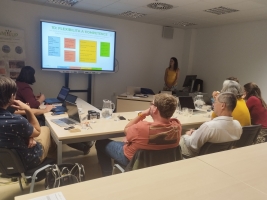  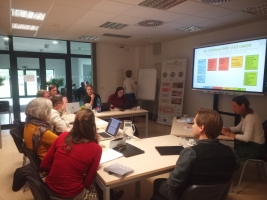  
Published on Oct 8, 2025
 The intensive cooperation with our partner secondary vocational school in Benešov continues. On Monday, we conducted training there on creating virtual tours in LUMI. The training was attended not only by students, who used it to process material acquired during our earlier excursion to the revitalized stream in Benešov, but also teachers, who will pass the knowledge to their students. The training was skillfully led by our students, Ester Šůsová and Šimon Cais. If you are interested in creating virtual tours, check out our newly created DERTO platform, where you will find not only instructions on how to create your own virtual tour in LUMI, but also a virtual tour of a demonstration site in Germany. The intensive cooperation with our partner secondary vocational school in Benešov continues. On Monday, we conducted training there on creating virtual tours in LUMI. The training was attended not only by students, who used it to process material acquired during our earlier excursion to the revitalized stream in Benešov, but also teachers, who will pass the knowledge to their students. The training was skillfully led by our students, Ester Šůsová and Šimon Cais. If you are interested in creating virtual tours, check out our newly created DERTO platform, where you will find not only instructions on how to create your own virtual tour in LUMI, but also a virtual tour of a demonstration site in Germany.
#TeamUp2Restore
  
Published on Oct 7, 2025
 Help us improve the newly launched beta version of our educational platform, the Digital Ecological Restoration Toolbox (DERTO)! This platform offers freely accessible educational materials in the field of ecological restoration. Help us improve the newly launched beta version of our educational platform, the Digital Ecological Restoration Toolbox (DERTO)! This platform offers freely accessible educational materials in the field of ecological restoration.
Visit the DERTO website and fill out the survey now! It will only take you 15-18 minutes. All survey responses are anonymous and will be only used to improve the quality and relevance of the learning materials.
Why your feedback is important: By completing our survey, you can directly influence how these valuable resources are designed and delivered. Your comments will help us improve the structure of the curricula, refine their content, tailor the resources to the real needs of users, and find the best ways to effectively disseminate these educational tools across Europe. Together, we can improve nature restoration skills and create a stronger green workforce. Be part of the change!
#TeamUp2Restore
 
|
|
In June, together with the students of our partner school in Benešov, we collected seed biomass and seeds of herbs from a species-rich donor meadow in Konopiště (watch the video).
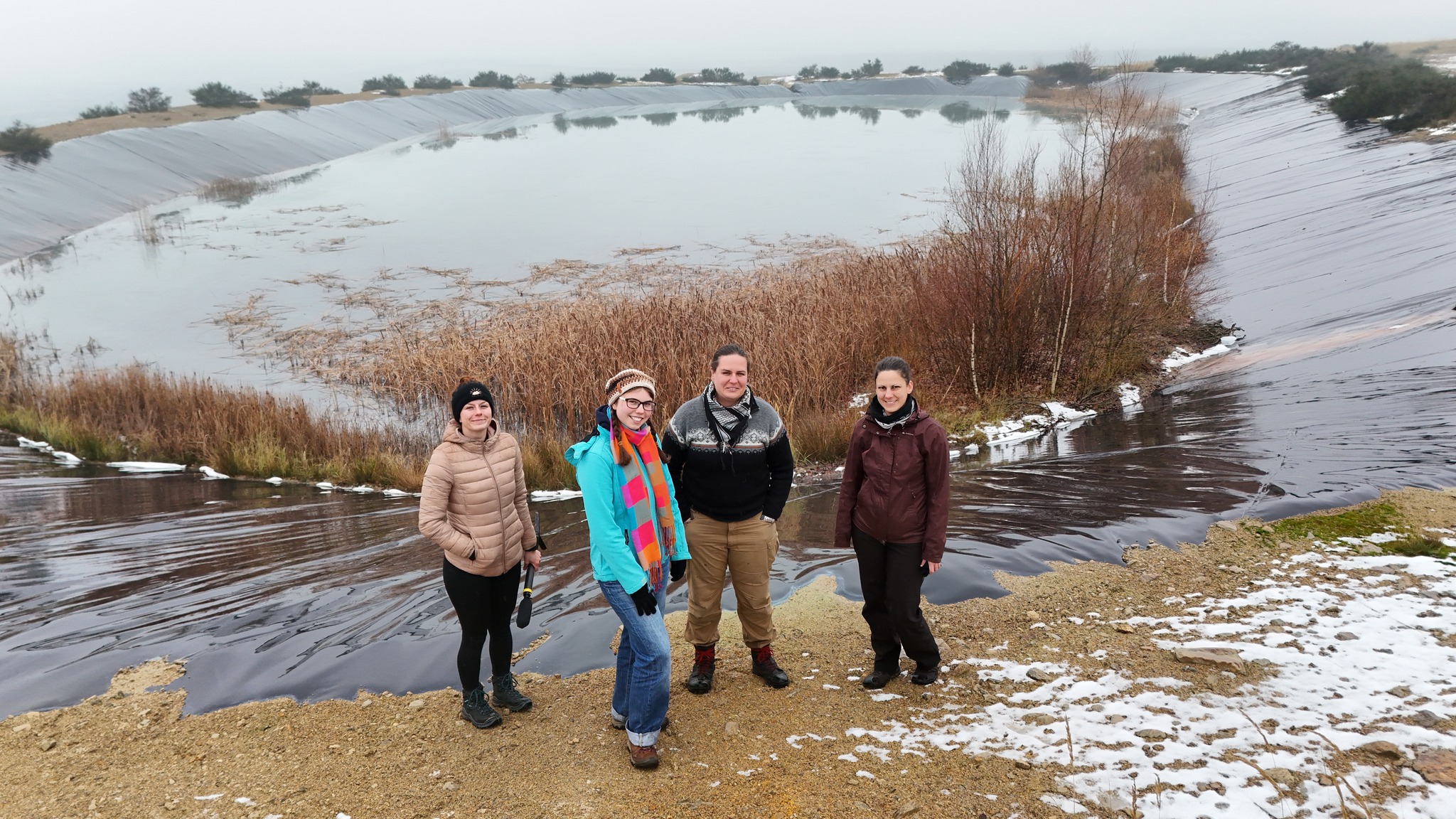 Neither the poor weather forecast nor the mud (lots of mud) could prevent us from visiting the Czech-Slovak Army quarry in the Most region. We enjoyed the quarry in its autumnal foggy atmosphere. We visited areas that were declared a National Natural Monument in October this year and where measures to support biodiversity are already being implemented. However, the main goal of our trip was to visit the spontaneously developed water pools. Our student Ester is monitoring these pools as part of her Bachelor thesis and is preparing a virtual tour focused on the ecological restoration of aquatic ecosystems in the mining landscape of the Most Basin. If everything goes according to plan, this tour will be ready by the end of spring next year.
Neither the poor weather forecast nor the mud (lots of mud) could prevent us from visiting the Czech-Slovak Army quarry in the Most region. We enjoyed the quarry in its autumnal foggy atmosphere. We visited areas that were declared a National Natural Monument in October this year and where measures to support biodiversity are already being implemented. However, the main goal of our trip was to visit the spontaneously developed water pools. Our student Ester is monitoring these pools as part of her Bachelor thesis and is preparing a virtual tour focused on the ecological restoration of aquatic ecosystems in the mining landscape of the Most Basin. If everything goes according to plan, this tour will be ready by the end of spring next year.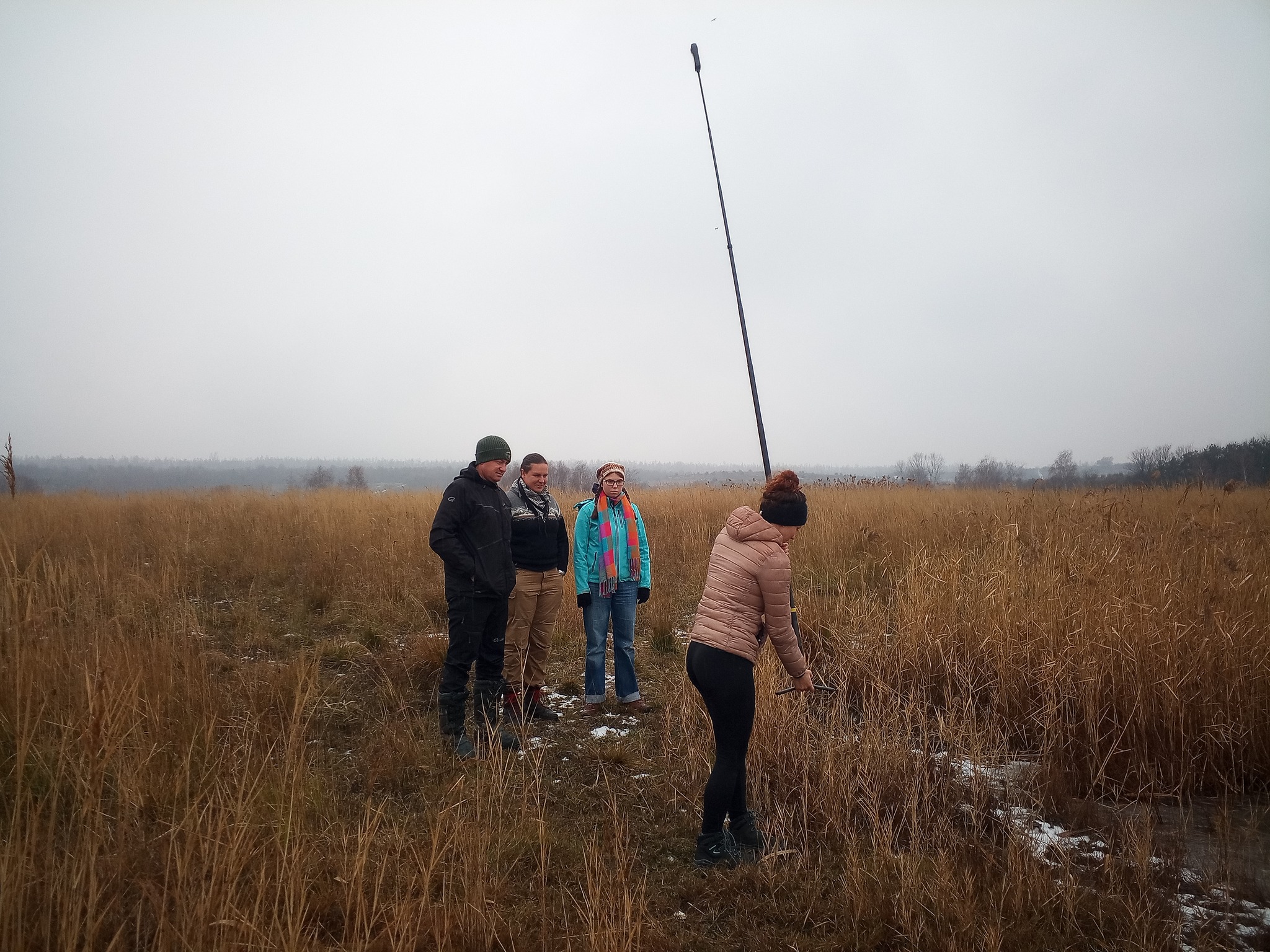
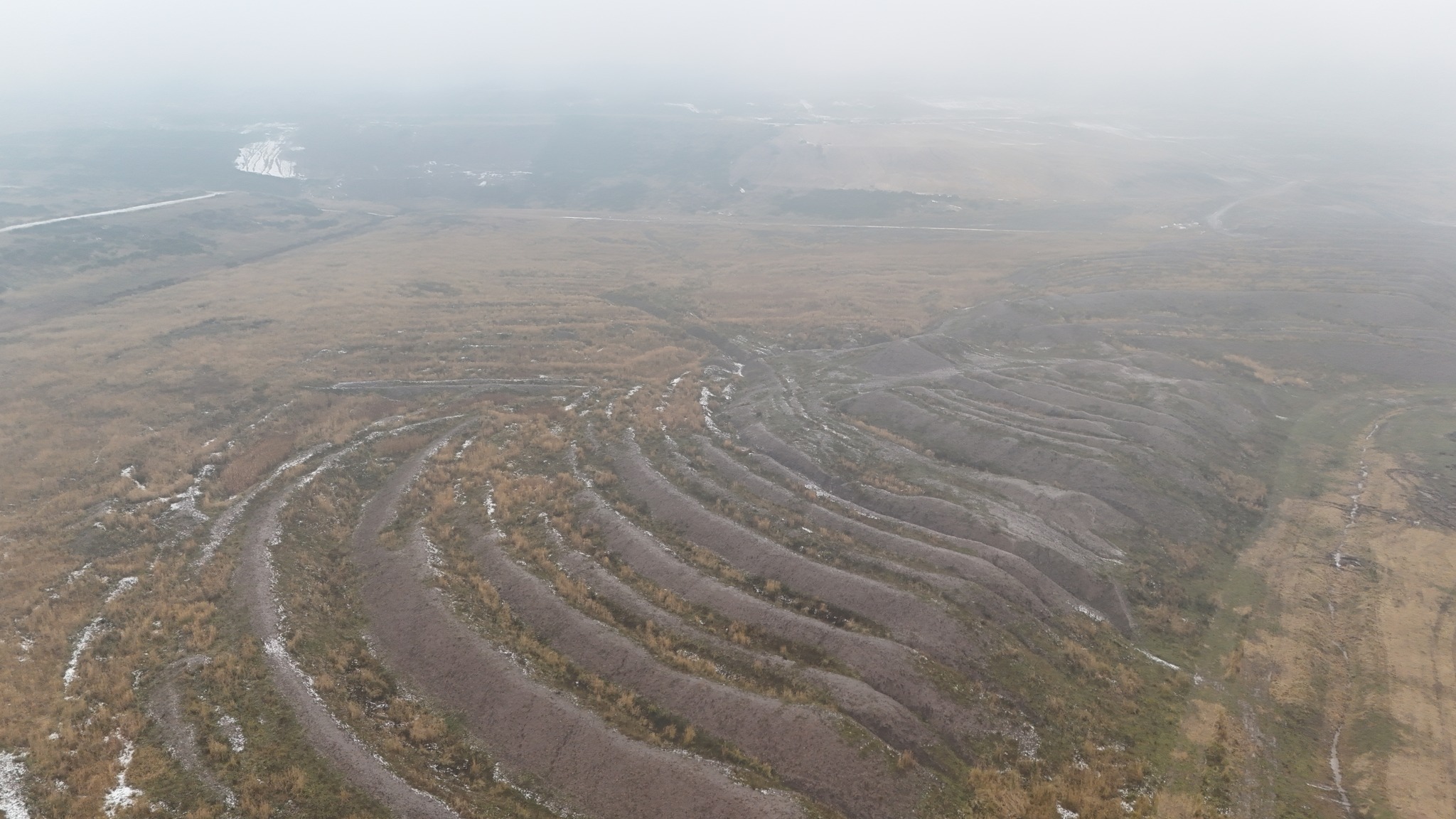
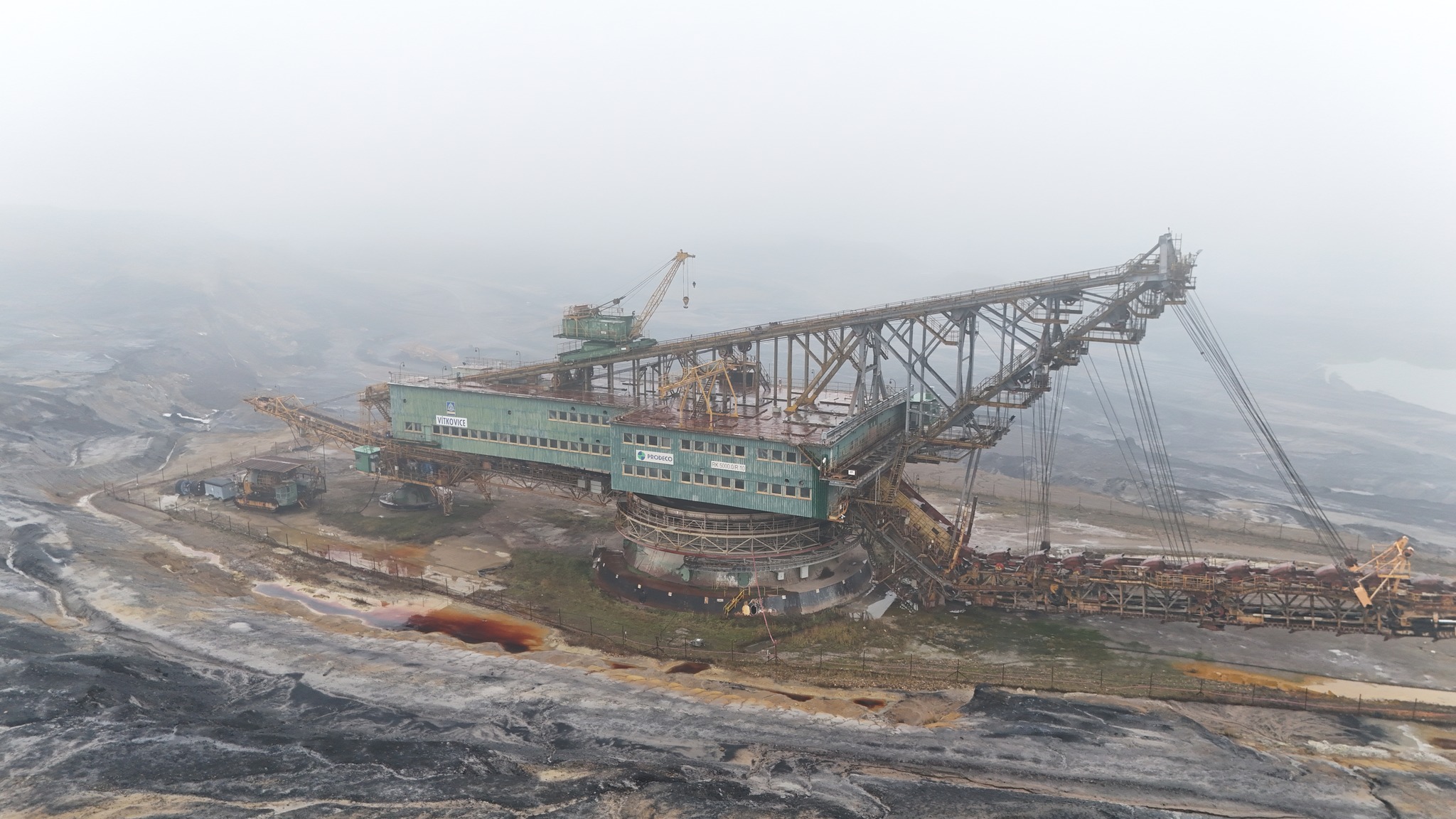
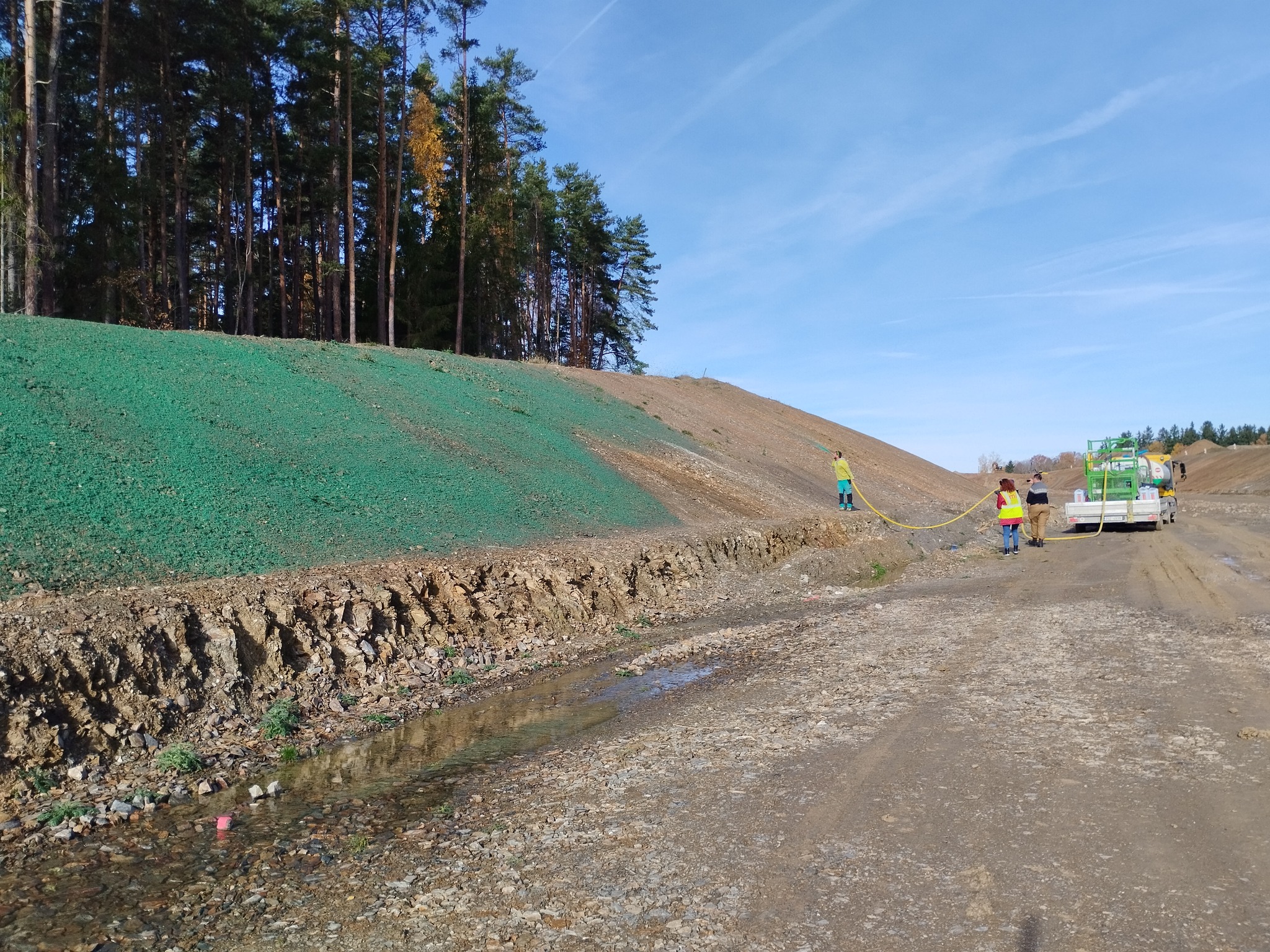 We always try to put our scientific findings into practice. An example of this approach is the use of a regional seed mixture for seeding the newly created edges of the highway near Kaplice. If all goes well, next year the slopes will gradually be covered with semi-steppe grasslands and heathlands. The seeds did not come from Africa, New Zealand, or the Netherlands, as is common practice in the seed market. They were carefully collected with a brush harvester from suitable donor meadows and forest edges no more than 50 km away. Sustainable and environmentally friendly with technical support from ZO ČSOP Šumava. The seeds were applied by hydroseeding so that they would remain on the slope until they germinated and rooted through the top layer of soil. Incidentally, as part of our ongoing project, we are also developing a new, affordable brushing harvester to support this effort.
We always try to put our scientific findings into practice. An example of this approach is the use of a regional seed mixture for seeding the newly created edges of the highway near Kaplice. If all goes well, next year the slopes will gradually be covered with semi-steppe grasslands and heathlands. The seeds did not come from Africa, New Zealand, or the Netherlands, as is common practice in the seed market. They were carefully collected with a brush harvester from suitable donor meadows and forest edges no more than 50 km away. Sustainable and environmentally friendly with technical support from ZO ČSOP Šumava. The seeds were applied by hydroseeding so that they would remain on the slope until they germinated and rooted through the top layer of soil. Incidentally, as part of our ongoing project, we are also developing a new, affordable brushing harvester to support this effort.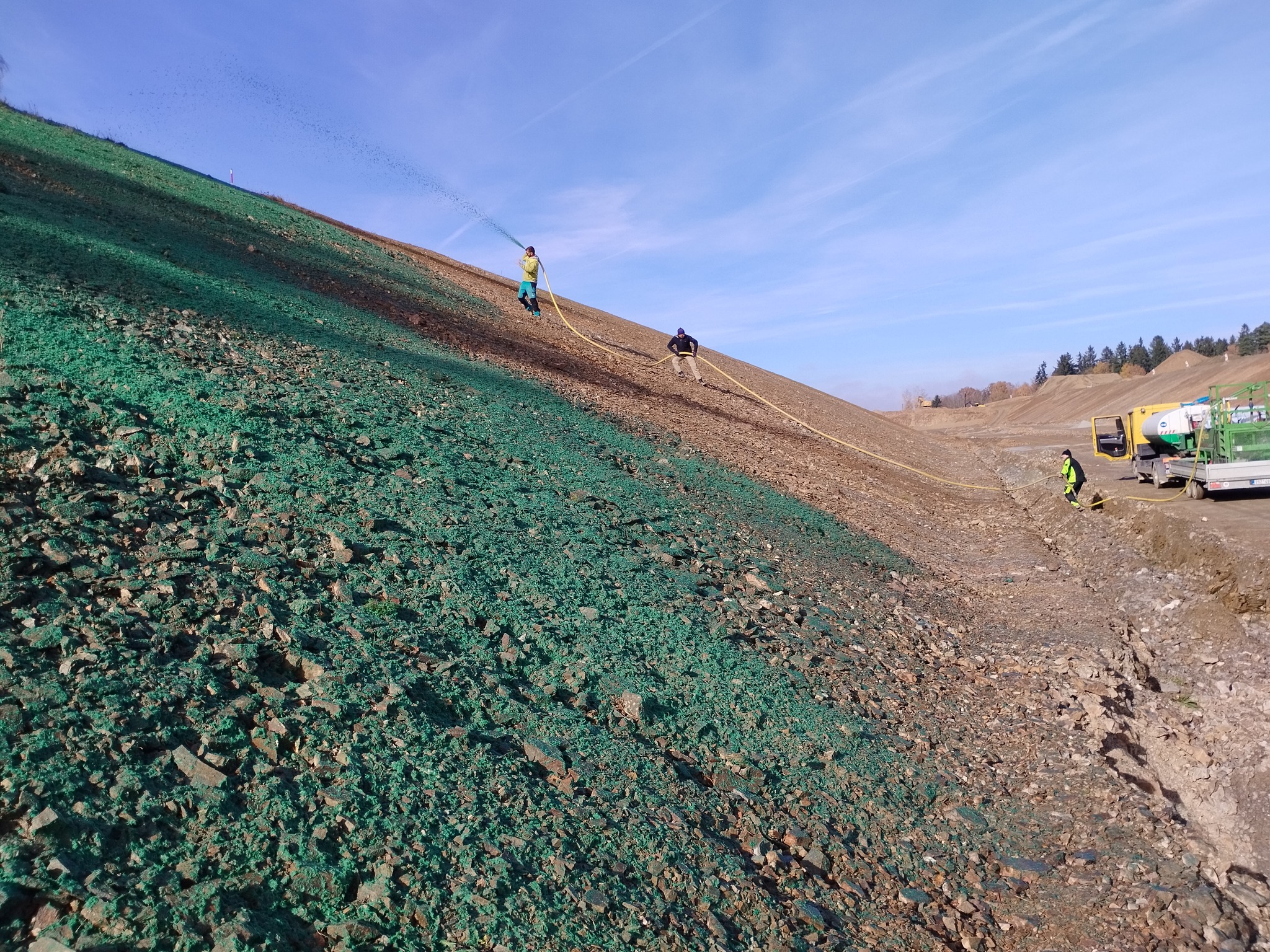
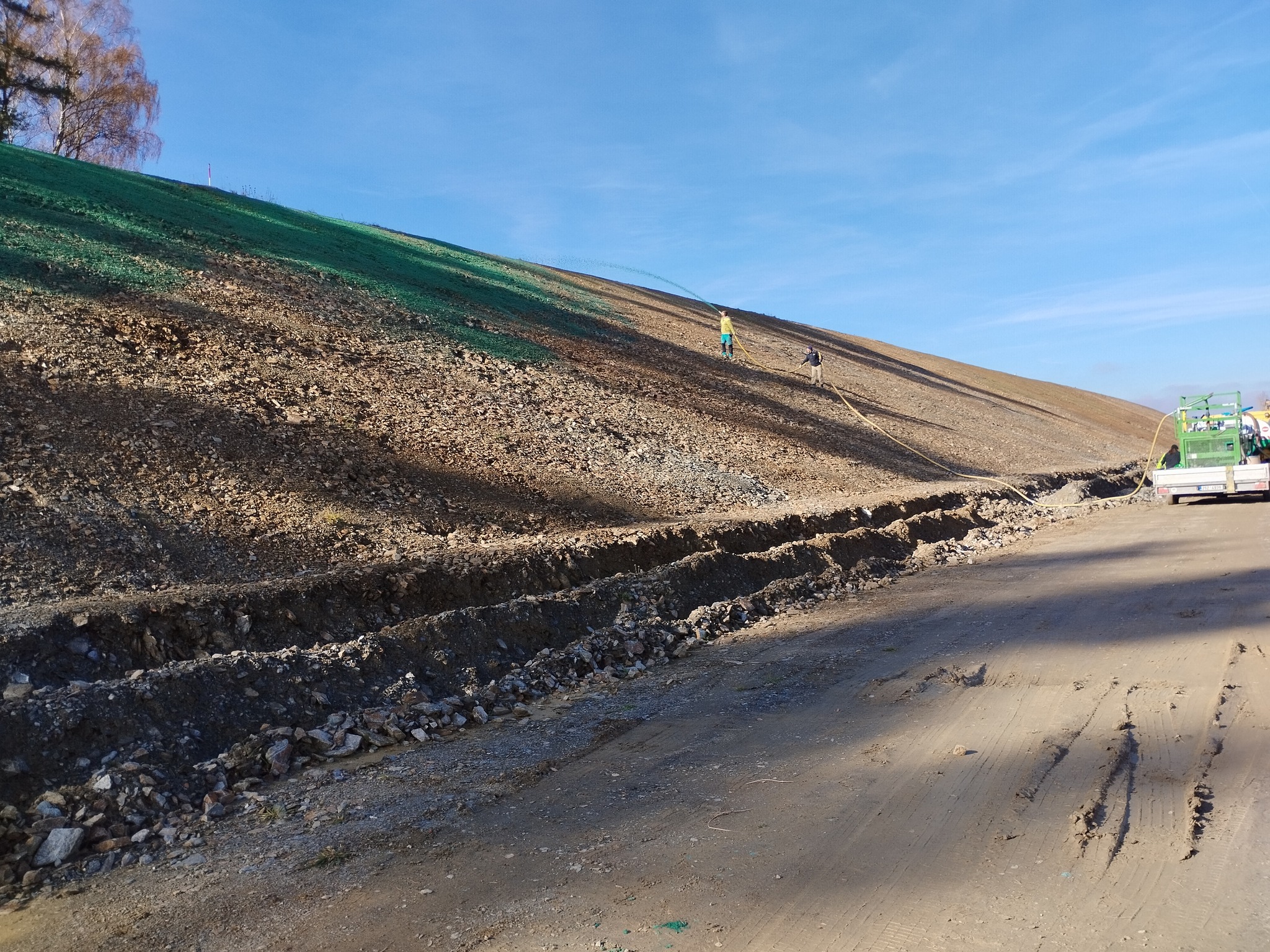
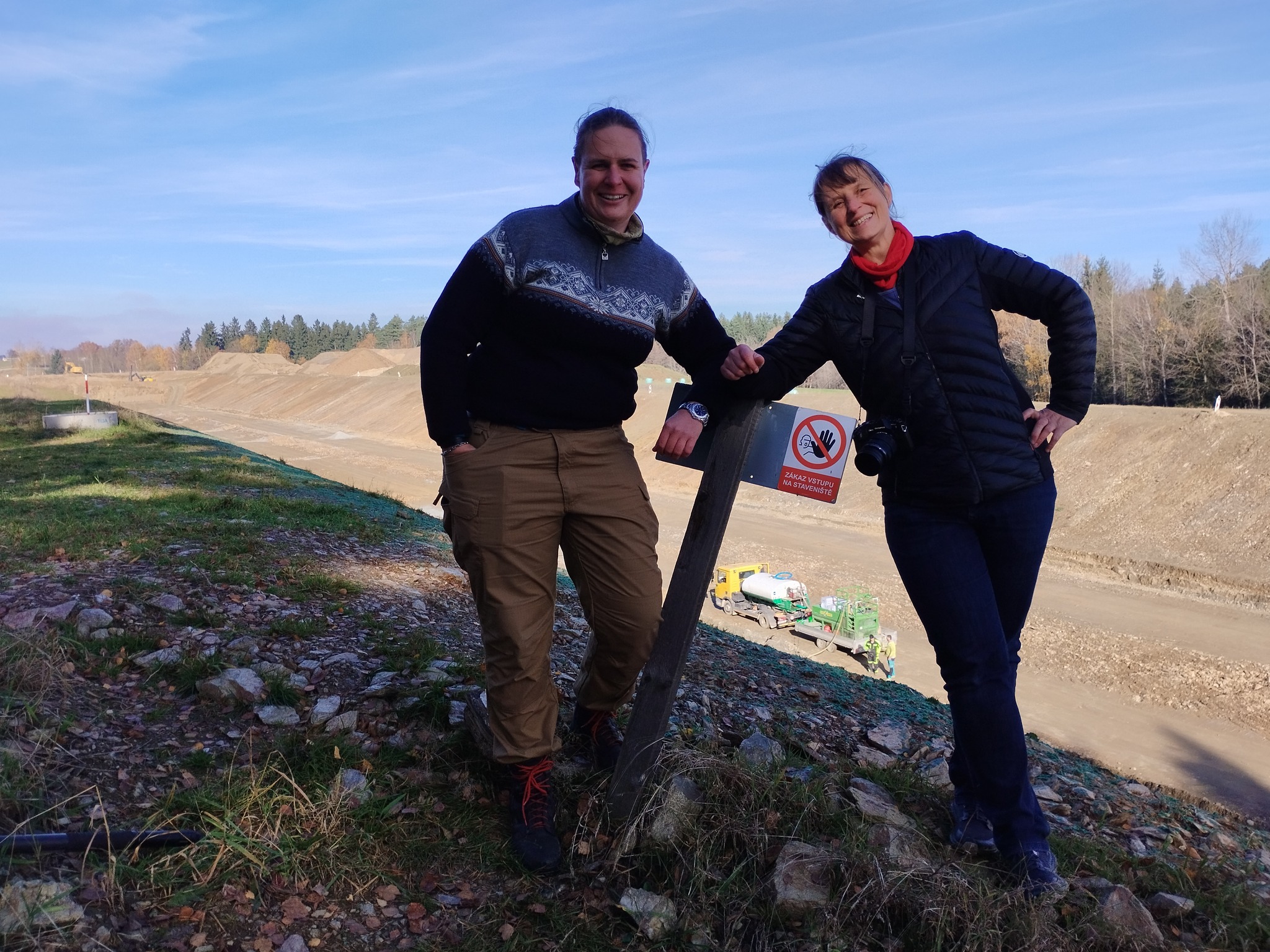
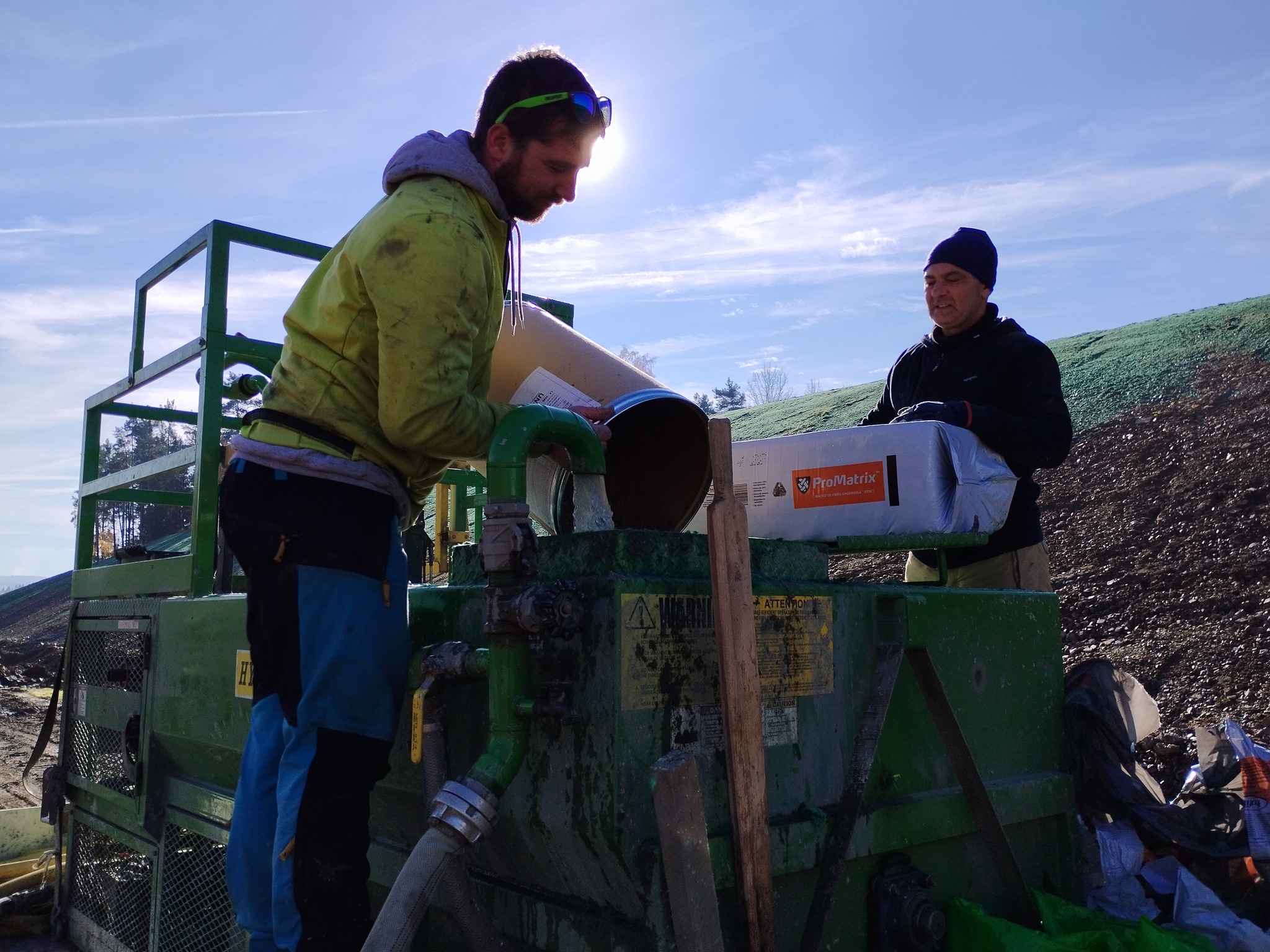
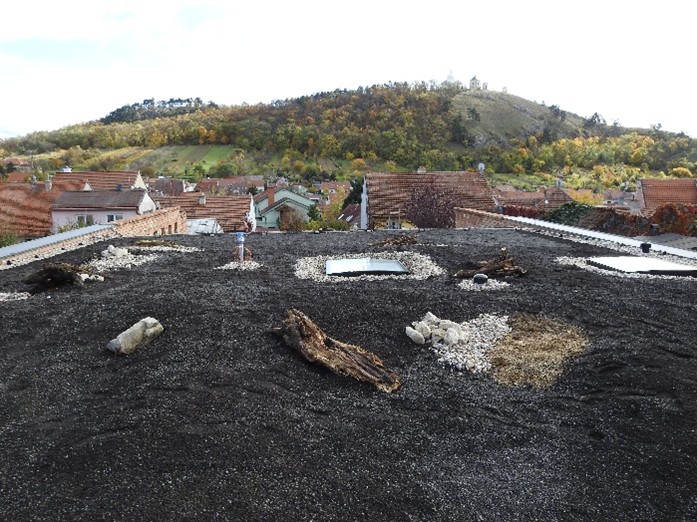 A new biodiverse green roof is being created near Kozí hrádek in Mikulov – and we were there to assist its creation. The roof was seeded with a seed mixture brushed from Stolová hora and Dunajovické kopce in Pálava, enriched with hand-collected seeds of regional origin. The aim is to create a steppe-like community similar to those that occur naturally in the surrounding area. The character of the roof is complemented by small limestone rocks and dead wood, which will provide shelter for various invertebrate species. The project is being implemented by GreenVille, with whom we are collaborating on a TAČR project aimed at supporting the biodiversity on urban green roofs.
A new biodiverse green roof is being created near Kozí hrádek in Mikulov – and we were there to assist its creation. The roof was seeded with a seed mixture brushed from Stolová hora and Dunajovické kopce in Pálava, enriched with hand-collected seeds of regional origin. The aim is to create a steppe-like community similar to those that occur naturally in the surrounding area. The character of the roof is complemented by small limestone rocks and dead wood, which will provide shelter for various invertebrate species. The project is being implemented by GreenVille, with whom we are collaborating on a TAČR project aimed at supporting the biodiversity on urban green roofs.
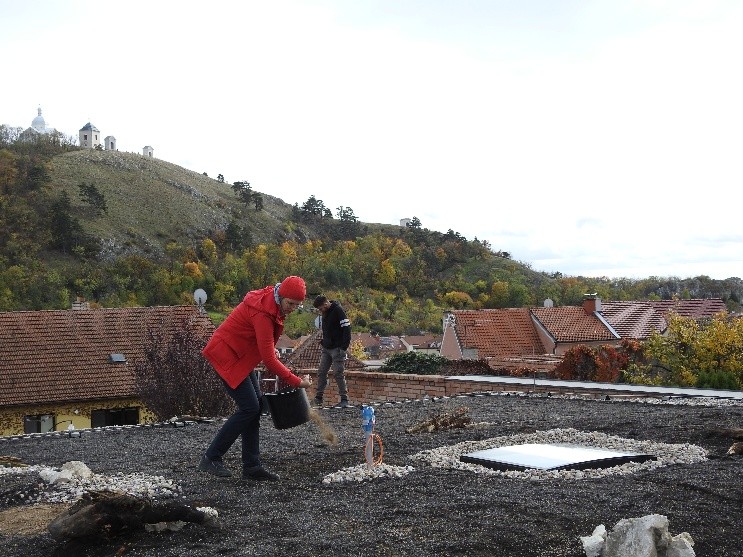
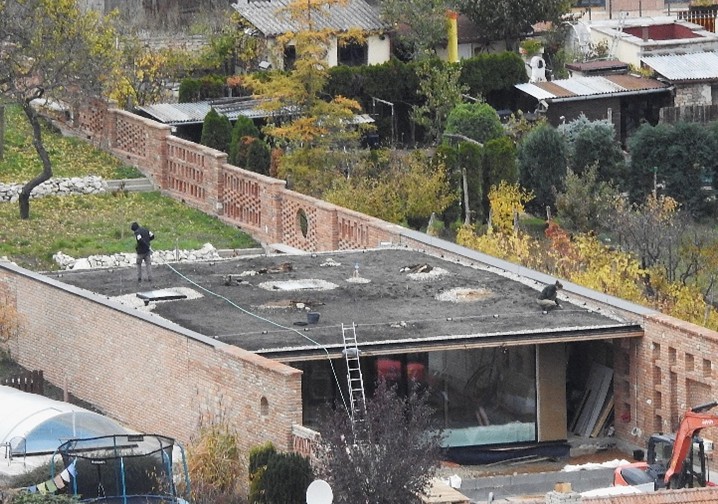
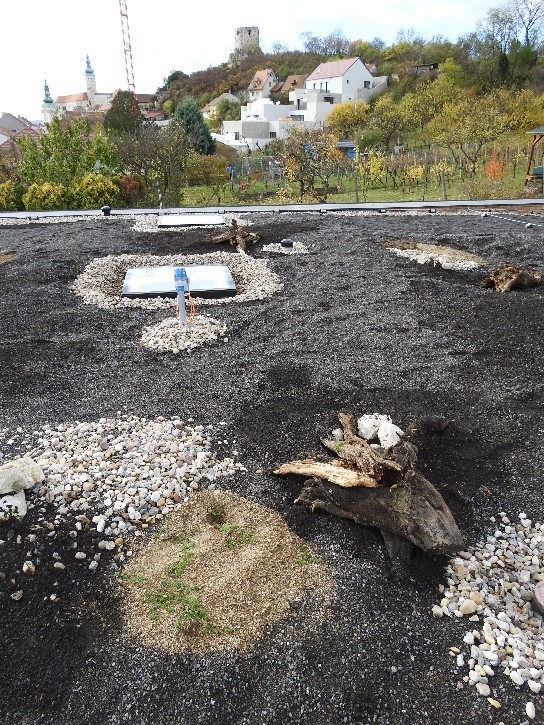
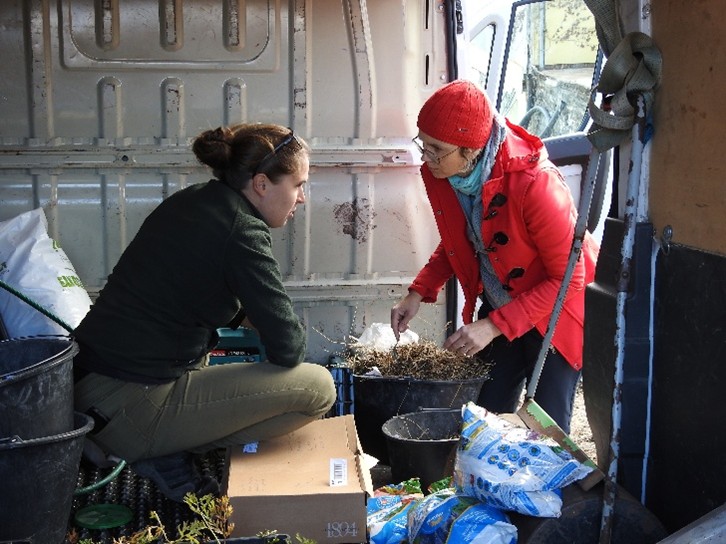

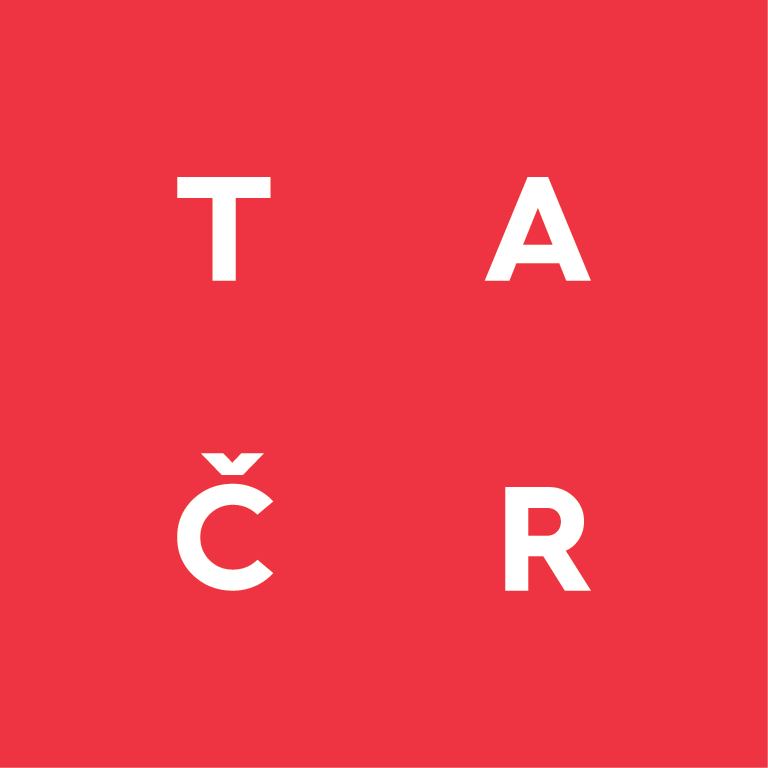
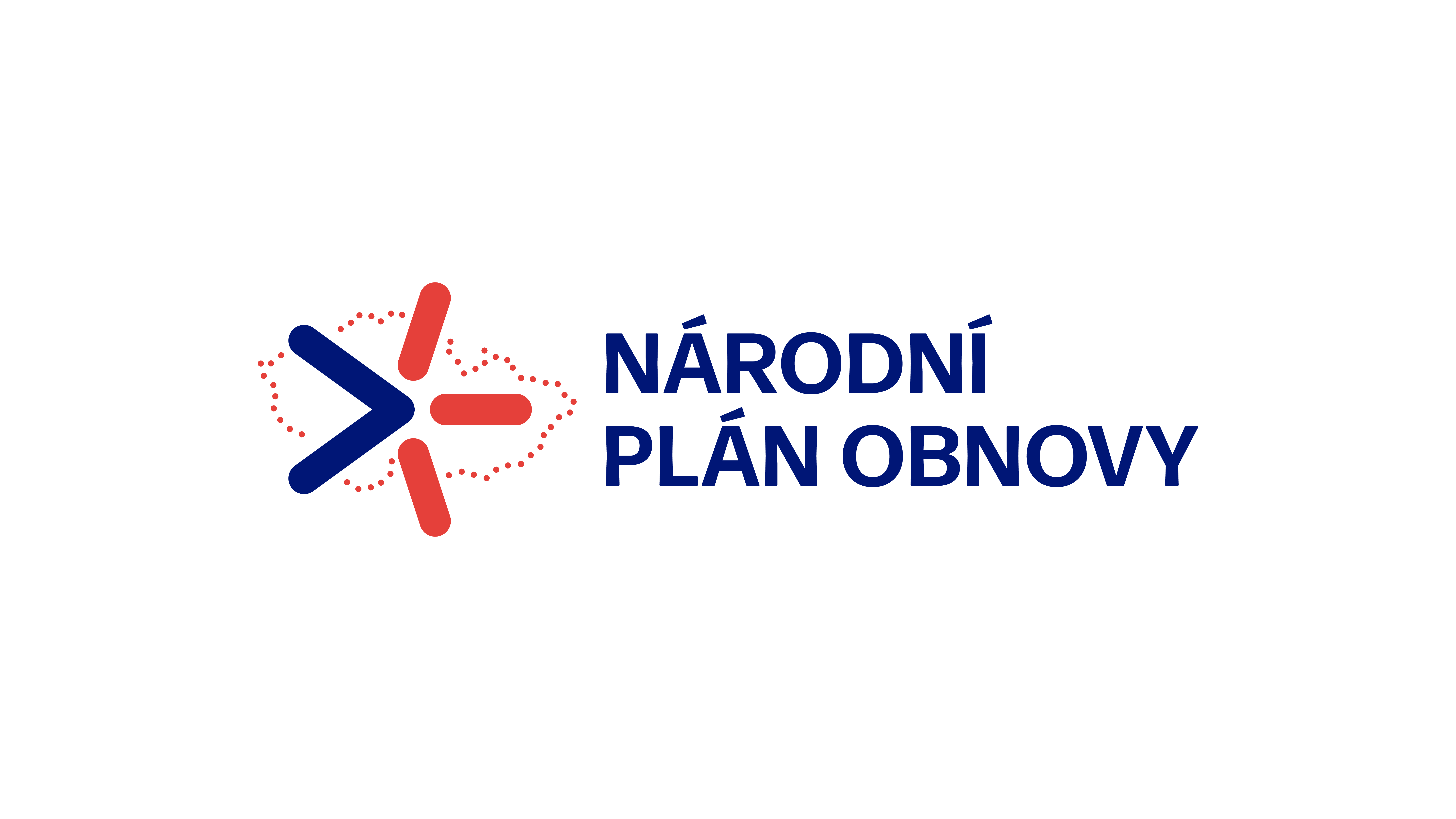
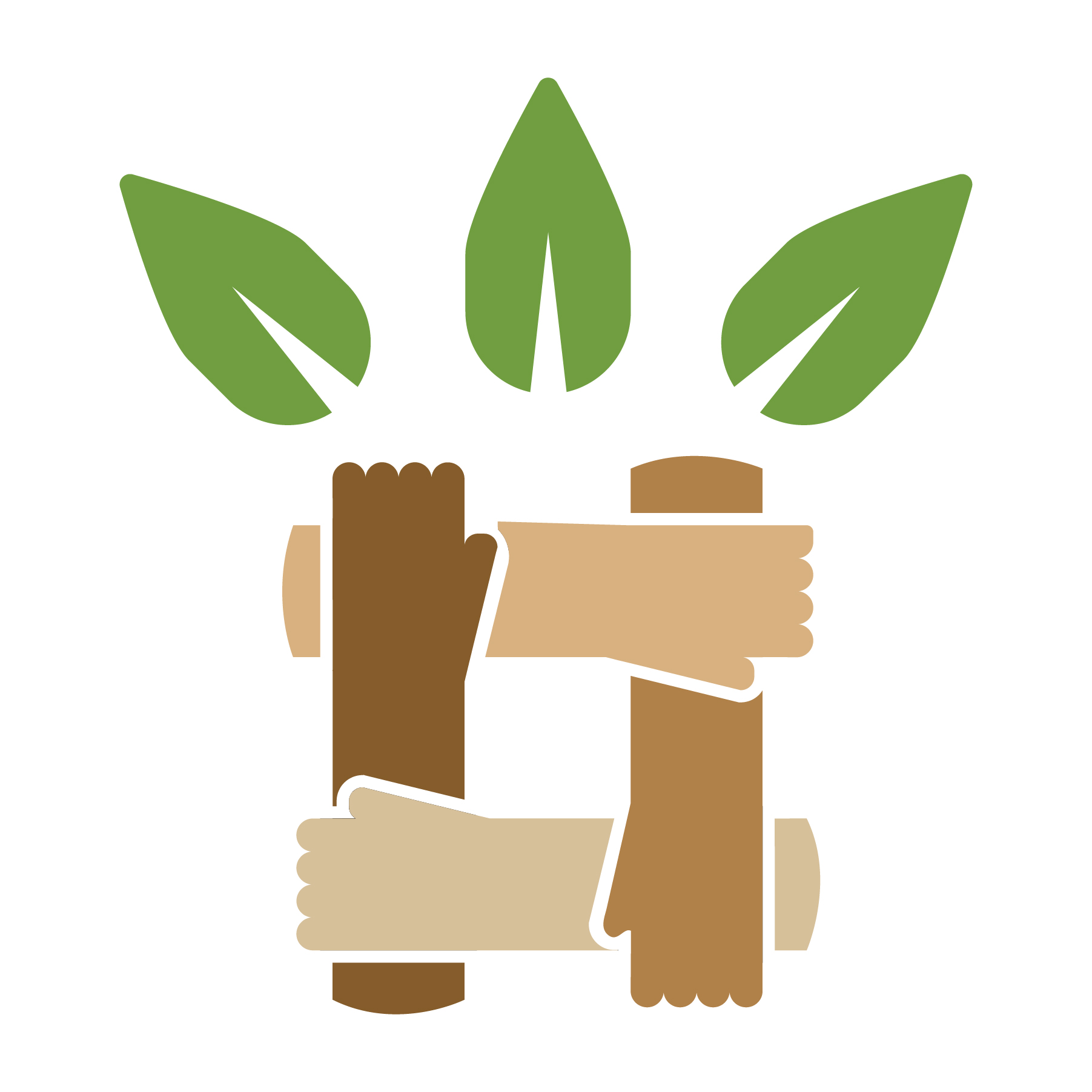 Our new learning platform DERTO has been launched! It offers teaching materials on ecological restoration freely available for download. Visit it here:
Our new learning platform DERTO has been launched! It offers teaching materials on ecological restoration freely available for download. Visit it here: 
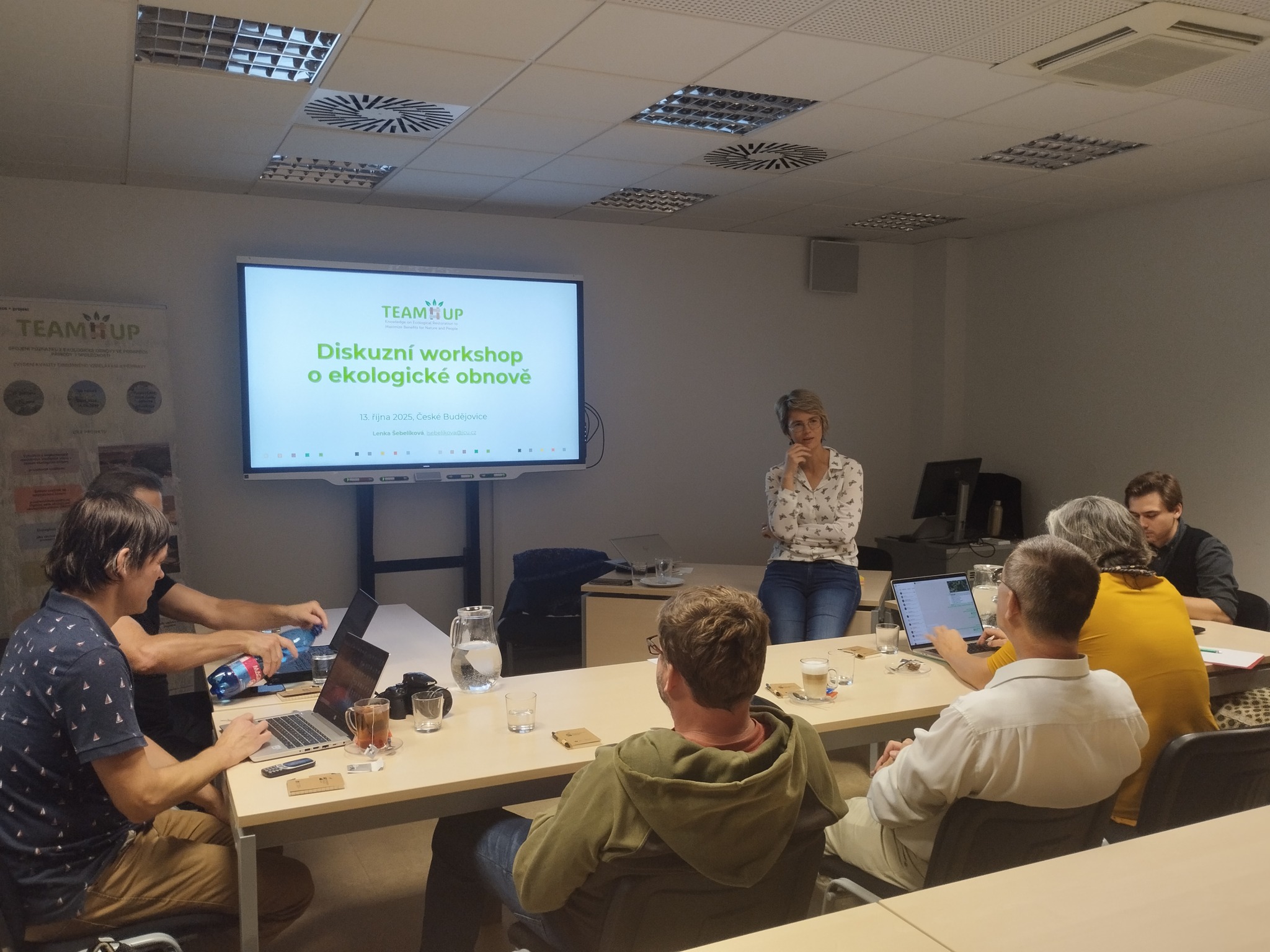 Last week, a Focus group on ecological restoration was held in České Budějovice as part of the TEAM#UP project. The goal was clear—to fine-tune the teaching materials that we use to feed the DERTO platform (derto.teamup2restore.eu). All essential information on the topic of ecological restoration will be collected there and made available to a wide range of users. We also discussed the long-term sustainability of the platform and materials, as well as the best way to support the teaching of ecological restoration in VET schools. The meeting was particularly fruitful thanks to the fact that it brought together a very diverse group of people with different perspectives on the issue – from the private, public, academic, and non-governmental sectors.
Last week, a Focus group on ecological restoration was held in České Budějovice as part of the TEAM#UP project. The goal was clear—to fine-tune the teaching materials that we use to feed the DERTO platform (derto.teamup2restore.eu). All essential information on the topic of ecological restoration will be collected there and made available to a wide range of users. We also discussed the long-term sustainability of the platform and materials, as well as the best way to support the teaching of ecological restoration in VET schools. The meeting was particularly fruitful thanks to the fact that it brought together a very diverse group of people with different perspectives on the issue – from the private, public, academic, and non-governmental sectors.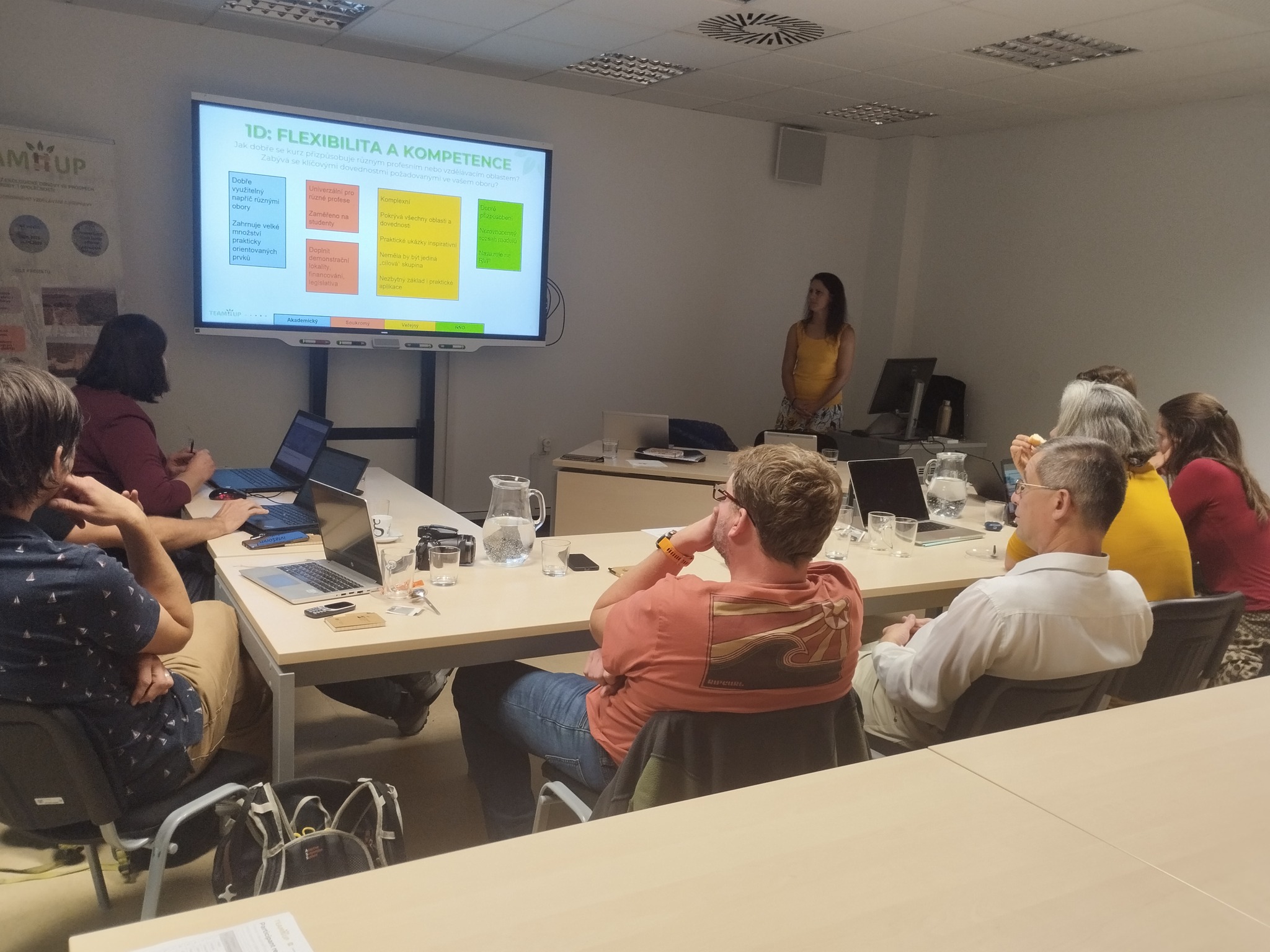
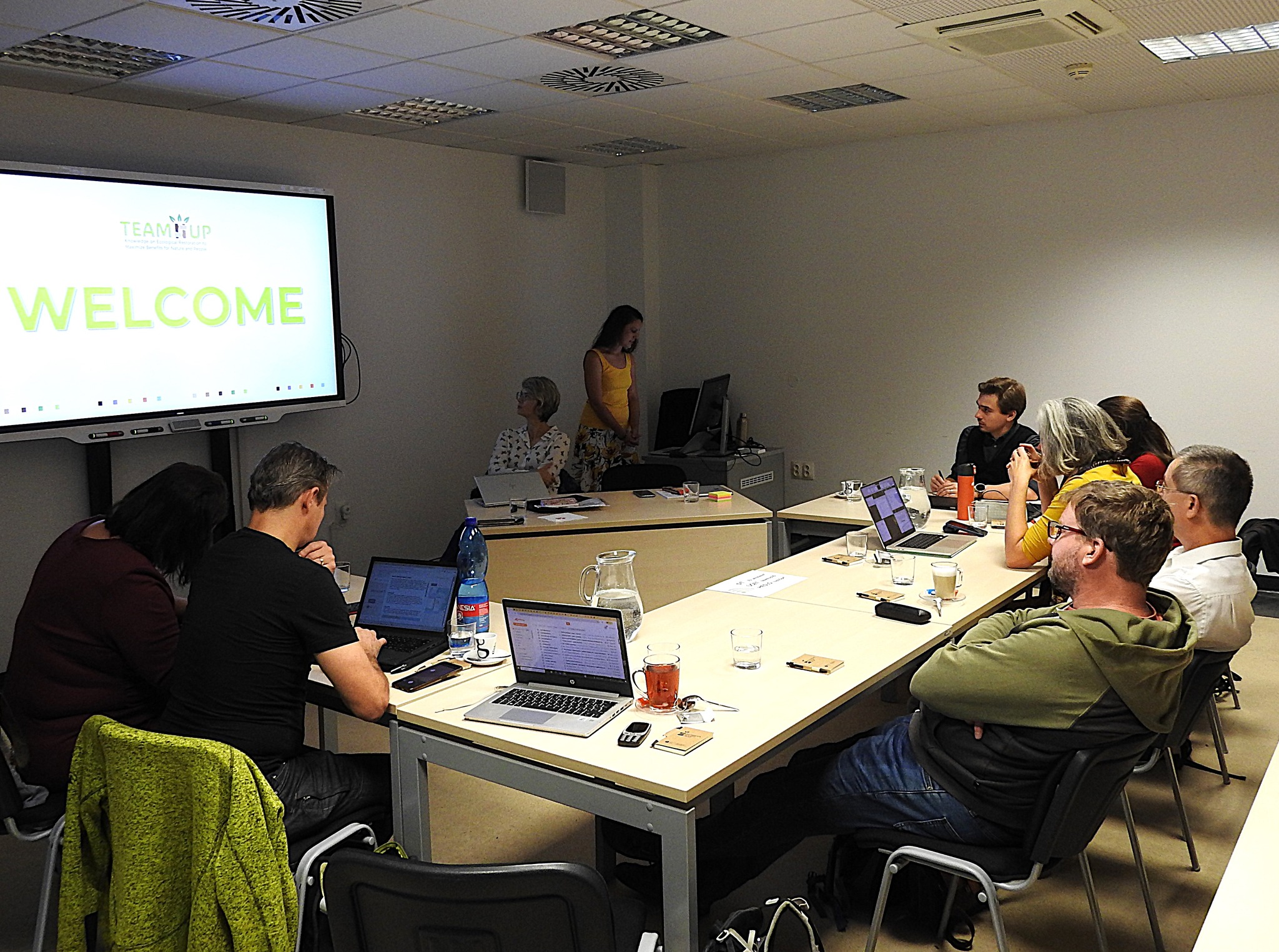
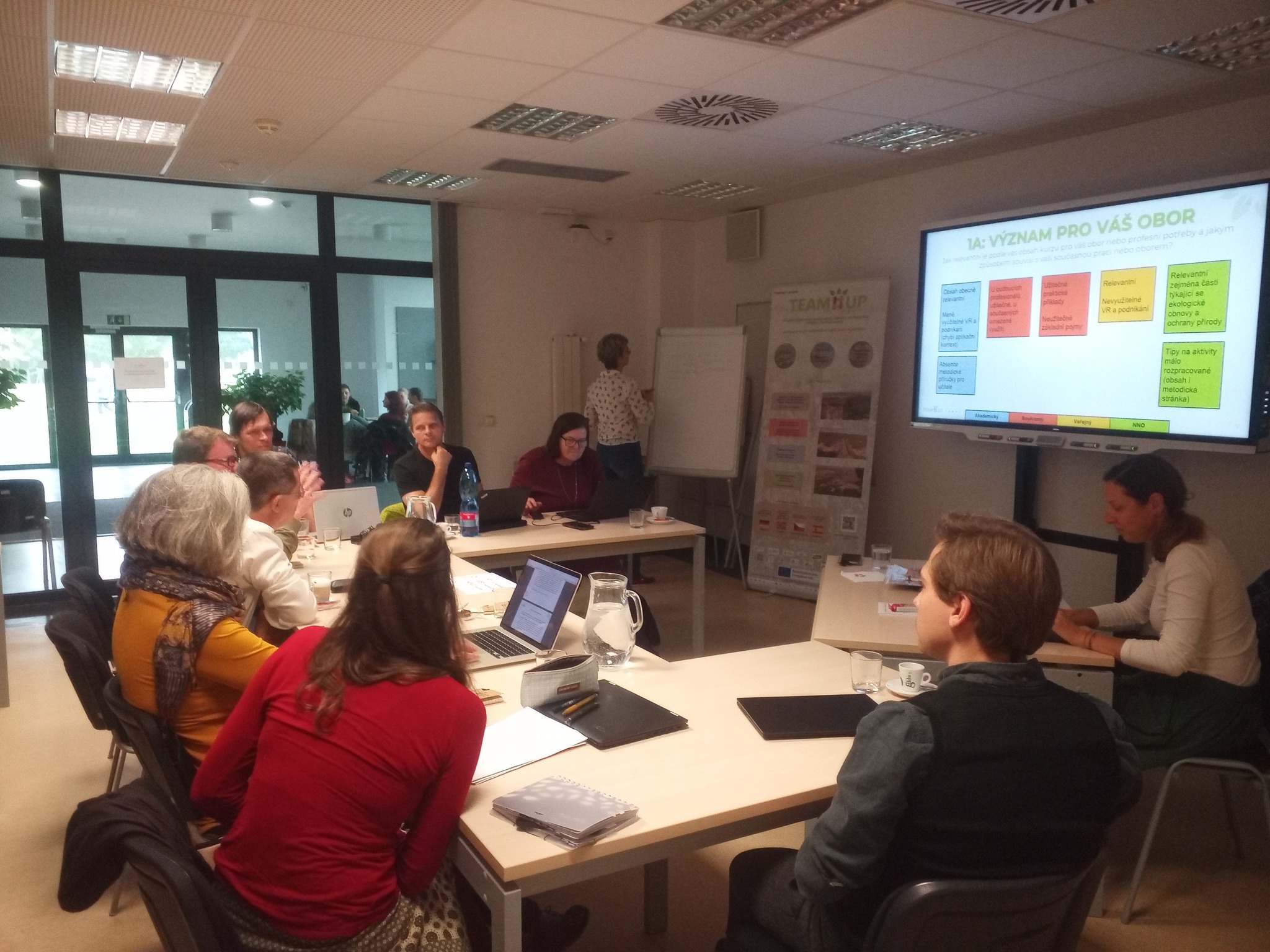

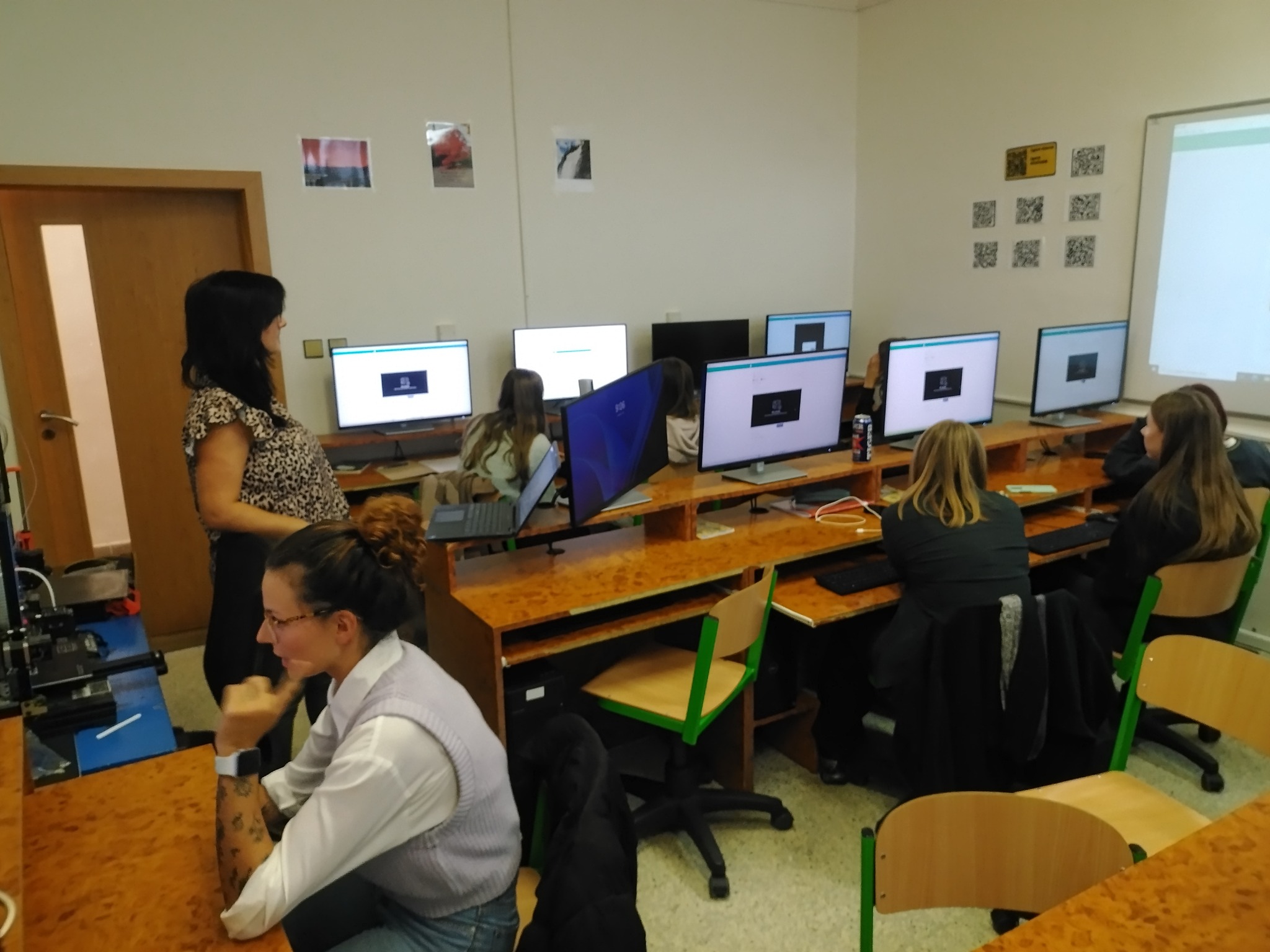 The intensive cooperation with our partner secondary vocational school in Benešov continues. On Monday, we conducted training there on creating virtual tours in LUMI. The training was attended not only by students, who used it to process material acquired during our earlier excursion to the revitalized stream in Benešov, but also teachers, who will pass the knowledge to their students. The training was skillfully led by our students, Ester Šůsová and Šimon Cais. If you are interested in creating virtual tours, check out our newly created
The intensive cooperation with our partner secondary vocational school in Benešov continues. On Monday, we conducted training there on creating virtual tours in LUMI. The training was attended not only by students, who used it to process material acquired during our earlier excursion to the revitalized stream in Benešov, but also teachers, who will pass the knowledge to their students. The training was skillfully led by our students, Ester Šůsová and Šimon Cais. If you are interested in creating virtual tours, check out our newly created 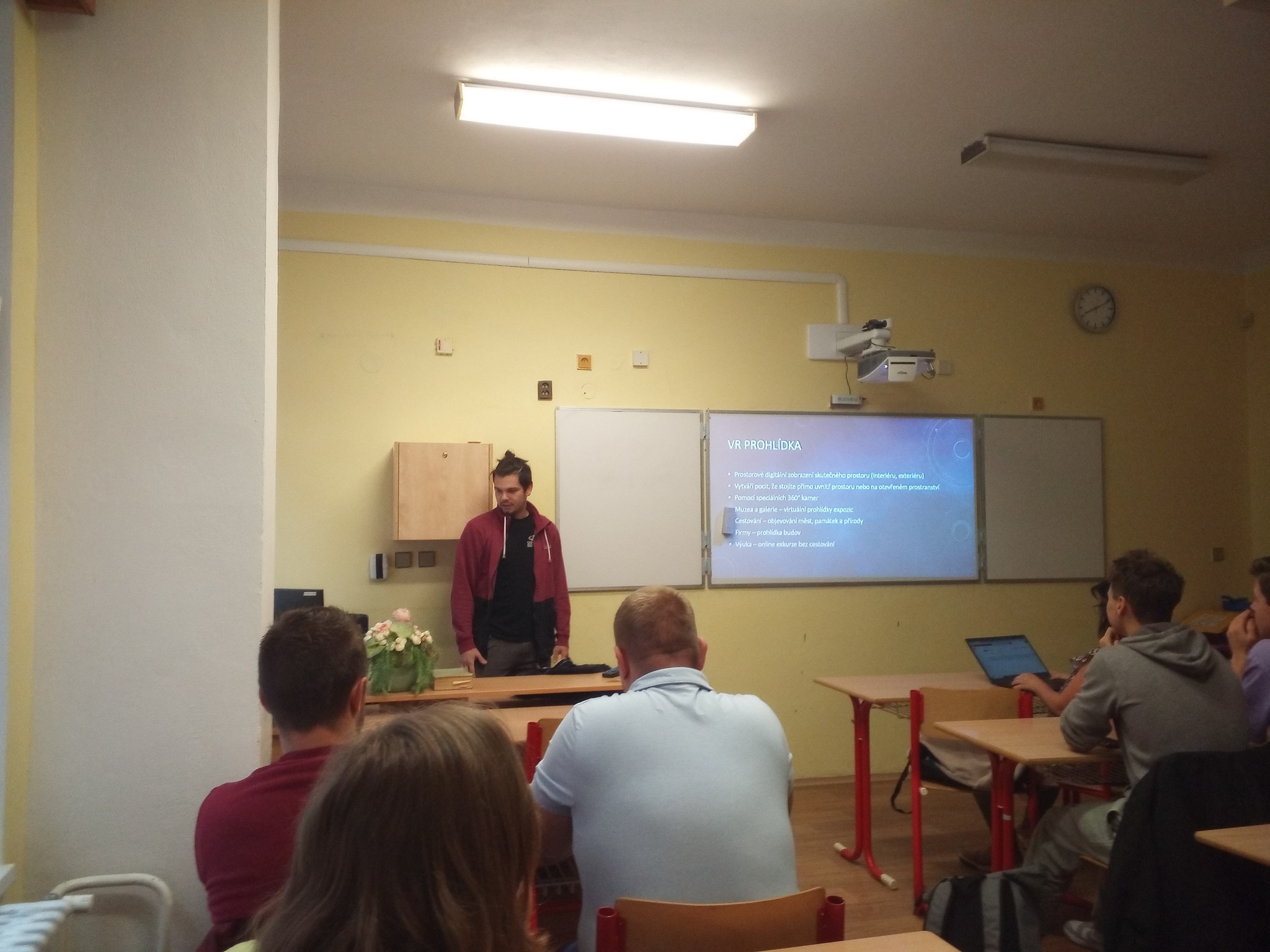
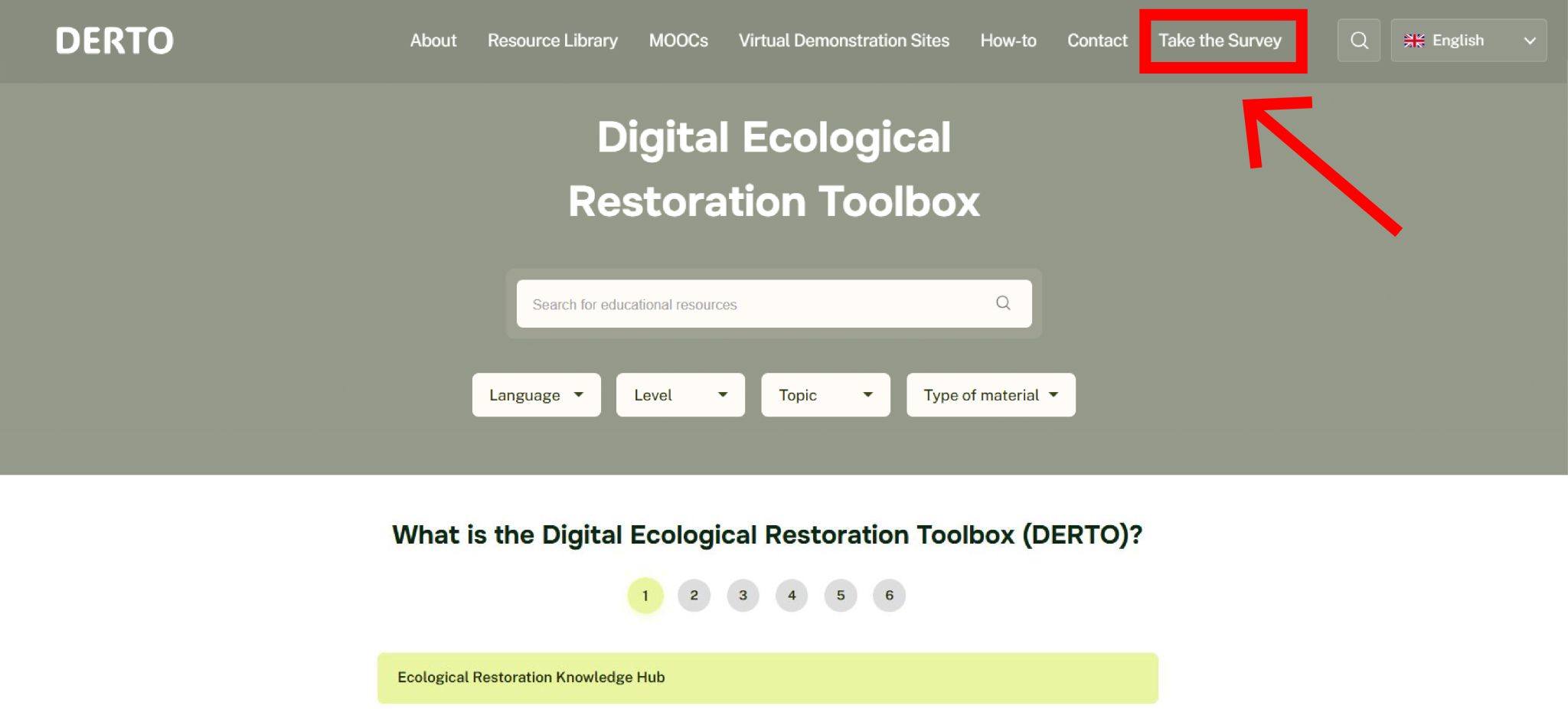 Help us improve the newly launched beta version of our educational platform, the Digital Ecological Restoration Toolbox (DERTO)! This platform offers freely accessible educational materials in the field of ecological restoration.
Help us improve the newly launched beta version of our educational platform, the Digital Ecological Restoration Toolbox (DERTO)! This platform offers freely accessible educational materials in the field of ecological restoration.